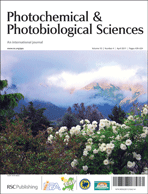Jorge J. Casal and co-workers explain why some long-day plants flower earlier when daylight hours are long (like in the spring or summer) while short-day plants flower earlier when daylight hours are short (for example in the autumn or winter). These different classes of photoperiodic response can be observed among different species and in some cases within a given species.
The Argentinian team led by Casal explored the mechanism controlling levels of proteins such as Flowering Locus T (FT) , Constans (CO) and others. They conclude that “the existence of multiple pathways with contrasting photoperiodic effects on flowering time within a single species, suggests that the photoperiodic behaviour of plants results, at least in part, from the net balance of positive and negative effects of photoperiodic conditions on multiple regulatory pathways”.
Read more about this manuscript here:
Balancing forces in the photoperiodic control of flowering, Sabrina E. Sanchez, Juan I. Cagnola, María Crepy, Marcelo J. Yanovsky and Jorge J. Casal, Photochem. Photobiol. Sci., 2011, 10, 451-460, DOI: 10.1039/C0PP00252F











